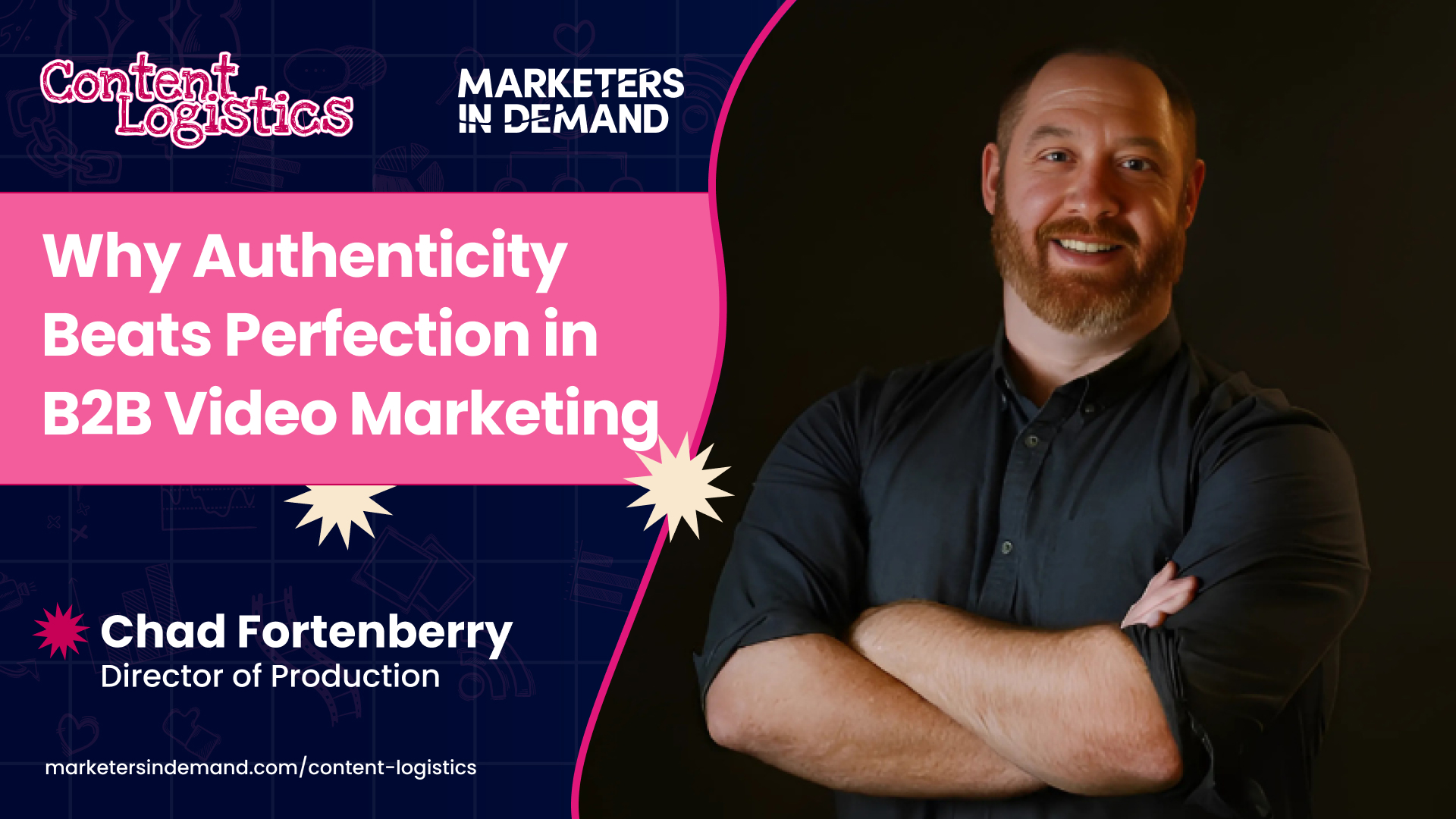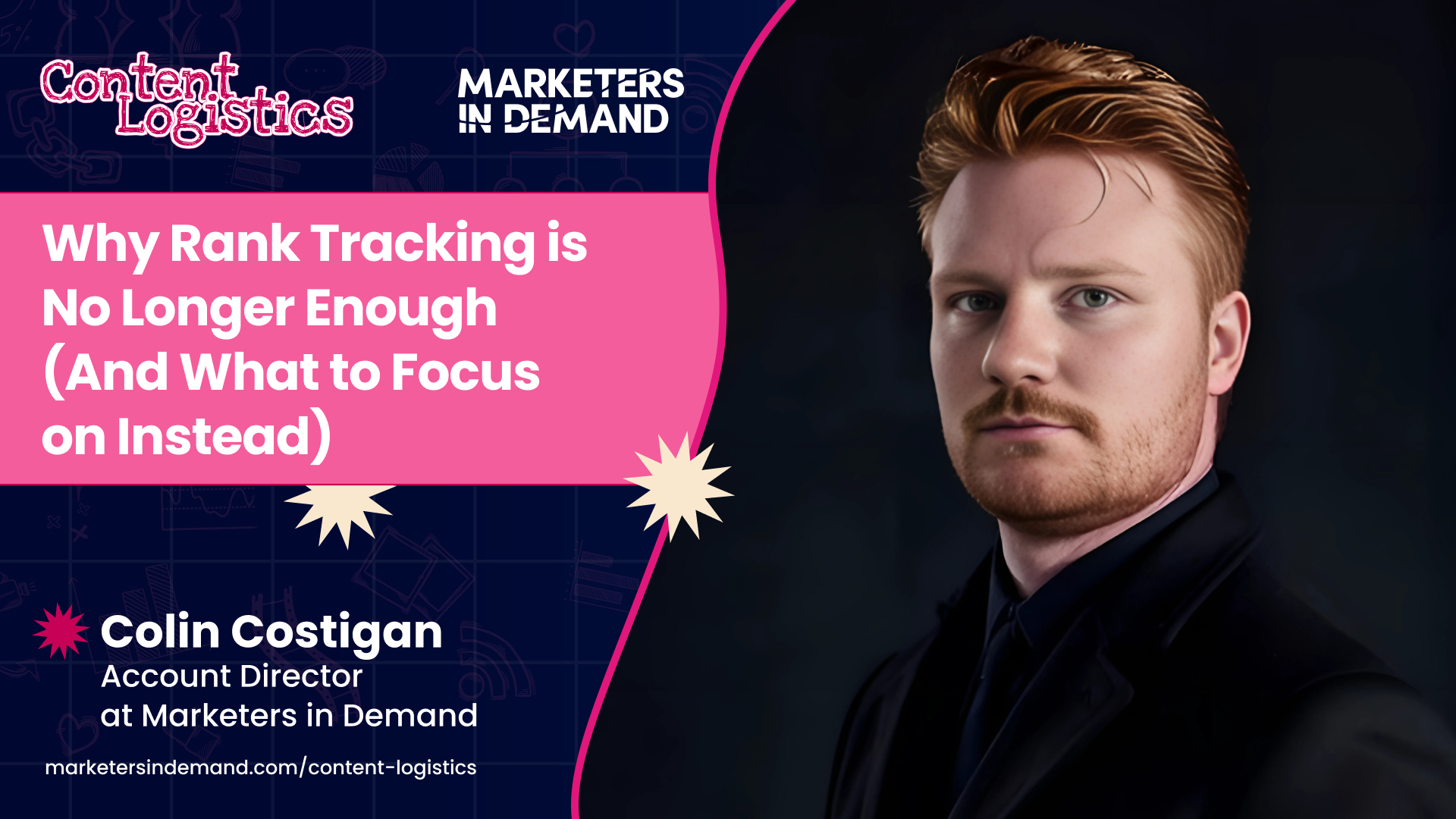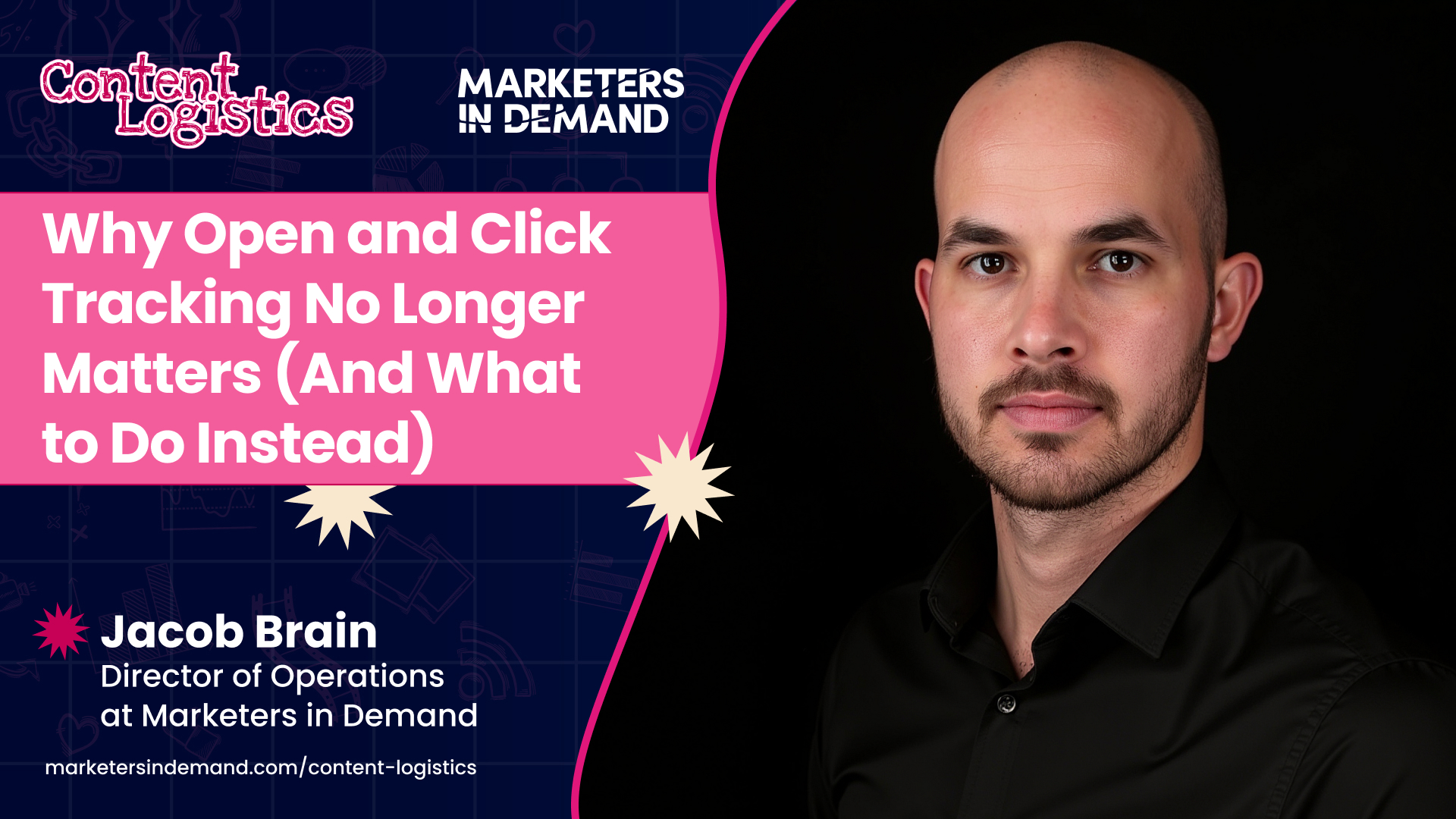AI can speed things up. But does it help you sell? In this episode of Content Logistics, Baylee Gunnell sits down with digital strategist Mike Moran to talk about the real metric that matters: effectiveness. With decades of experience in search, content, and AI, Mike pulls back the curtain on why chasing efficiency can quietly sink your marketing.
He explains how most B2B teams measure the wrong things—like traffic and rankings—instead of tracking the behaviors that signal buyer intent. Mike shares clear ways to spot if your content is working long before a form fill. He walks through overlooked strategies like using first-party data, smart micro-conversions, and JavaScript to track real engagement.
Mike also shows how marketers can use AI—not to replace content creators—but to run better tests, make faster changes, and improve conversion paths. If you’ve been stuck in analysis paralysis or chasing vanity metrics, this episode is a wake-up call.
https://mikemoran.com
http://www.converseon.com
https://sharedaudiences.com/
Featured Guest

Name: Mike Moran
What he does: President
Company: Mike Moran Group
Noteworthy: Former IBM Distinguished Engineer with 13 patents in search technology.
Featured Guest
Key Insights
Effectiveness Over Efficiency in AI Marketing
Mike Moran explains that while AI offers tempting shortcuts, focusing solely on efficiency can backfire. He shares a story of a marketing leader who proudly cut costs by using AI to replace content writers—only to see conversions drop by 15%. Moran argues that teams chasing cost-savings without considering effectiveness often lose in the long run. True success lies in improving how marketing drives business results, not just reducing headcount or producing more content. Efficiency may come as a byproduct of better strategy, but it should never be the primary goal. Moran emphasizes that marketers must shift their mindset from measuring output to measuring outcomes—and use AI to enhance quality, not just quantity.
Measure What Matters—Not What’s Easiest
Moran warns that many B2B teams measure cost because it’s easy, not because it’s meaningful. In long sales cycles, it’s hard to track conversions, so marketers default to surface-level metrics like traffic or page views. He recommends using behavioral signals—such as scrolling depth or link engagement—to better understand if content is resonating. By identifying whether users are finding answers or bouncing in frustration, marketers can get closer to understanding what content actually drives progress. Moran also advocates for setting up micro-conversions like interactive tools or tiered offers that show genuine buyer interest early. With the right tracking in place, teams can tie actions to intent—and eventually, to revenue..
Data-Driven Content Starts With Differentiation
According to Moran, many content marketers make the mistake of chasing high-volume keywords instead of focusing on what makes their solution unique. He urges teams to create content around questions they are best equipped to answer—not just popular search terms. Educating the wrong audience wastes time and drives leads to competitors. Instead, content should speak directly to buyers’ pain points that only your product solves. Moran suggests marketers embrace niche queries—even those with low search volume—if they lead to higher-quality conversions. Differentiation drives impact, especially in B2B where decision cycles are long and multiple stakeholders are involved.
Build the System Before You Scale the Spend
Moran draws a sharp comparison between marketing without attribution and running a business without accounting. He urges marketers to set up basic systems—like call tracking numbers or engagement-based JavaScript—before scaling budgets. These simple tools help teams connect marketing touchpoints to real outcomes. Without them, leaders can’t justify results, fight for budget, or make data-informed decisions. Moran argues that marketers must take control of their measurement strategy, even if it means starting with low-tech solutions. Proving return on marketing spend builds trust with executives and unlocks more investment. Attribution doesn’t have to be complex, but it must be deliberate—and it must come before AI can be truly effective.
Episode Highlights
Why Most Attribution Models Fall Short
Mike Moran breaks down why traditional attribution in marketing is often flawed—especially in B2B. He explains that marketers tend to rely on what’s easy to track, not what actually drives results. Instead of investing in proper attribution infrastructure, many teams end up guessing. He compares it to running a business with no accounting system and challenges marketing leaders to rethink what they measure. Using a creative example from his time at IBM, Moran illustrates how even simple tools like unique phone numbers can solve attribution blind spots. The key, he argues, is building a system that maps engagement to sales—because if you can’t prove impact, you’ll keep getting budget cuts.
“And the way that they knew whether they had a good day or not, is they counted how much money was in the drawer… I’m like, guess what? This is what job you gave your chief marketing officer. No system at all to know what’s working, what’s not.”
Rethinking Responsive Design with AI
Moran introduces the concept of “true” responsive design—not just designing for different screen sizes, but adapting in real-time to user behavior. He explains how AI can allow websites to detect patterns in how people navigate and adjust the experience dynamically to move visitors closer to conversion. By watching which content paths users take, marketers can influence those journeys more effectively. This responsiveness makes the user experience more persuasive and personalized, rather than static. Moran sees this as the next frontier in AI-powered marketing—a system that doesn’t wait for a person to interpret the data, but acts on it in real time.
“We think responsive design is… making your website respond to the size of the device it’s on. Well, great. But how much better would your marketing be if you were responding to what the user is doing?”
Speed vs. Statistical Significance in Testing
In this section, Moran challenges the idea that you must wait for statistical significance before taking action on a test. He argues that in digital marketing, speed often trumps precision. Rather than obsessing over 95% confidence levels, teams should aim to run more experiments quickly—even if it means a slightly higher error rate. As long as you continue testing, the truth will reveal itself. Moran’s pragmatic stance encourages marketers to embrace imperfection when making decisions, especially if changes are reversible. The goal, he says, is to move fast, learn faster, and refine along the way.
“Suppose instead of waiting till you got to 95% confidence, suppose you started making decisions when you got to 80%… you are eventually going to figure out that that was wrong… you’re only gonna hit it on one out of five.”
Trust Your Inner Analyst
Toward the end of the episode, Moran offers reassurance to marketers intimidated by data. He stresses that you don’t need to be a data scientist to make smart decisions. Reasoning with numbers, asking the right questions, and trusting your common sense are often more important than complex math. Moran believes marketers should build confidence in their ability to work with data by approaching it with curiosity, not fear. This section is a reminder that analytics is not about perfection—it’s about insight and progress.
“It’s not about math… It’s about being willing to reason with numbers… You do not need to be some kind of math whiz to ask questions about the numbers until you have enough information that you are willing to make a decision..”











